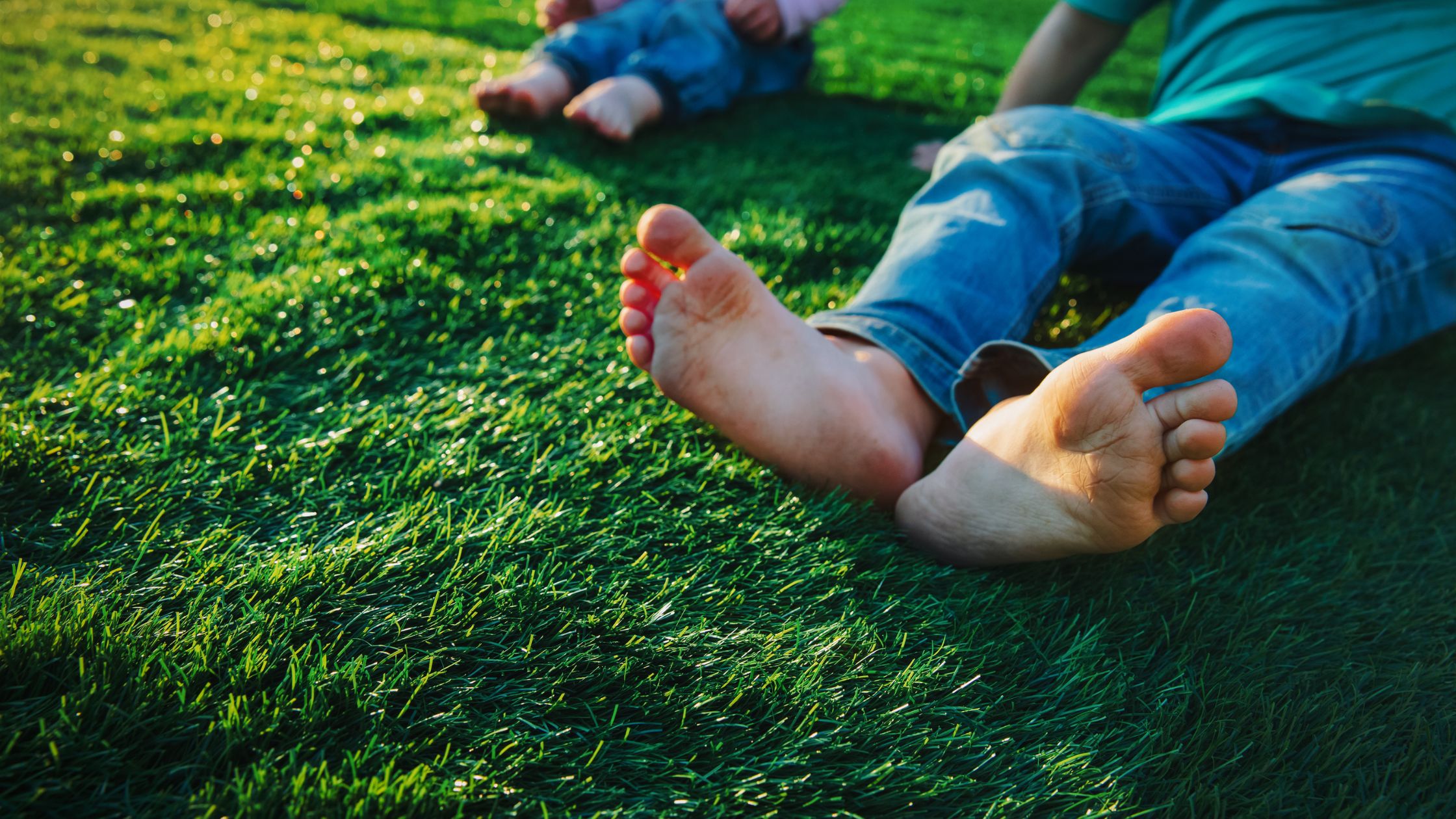The Benefits of Barefoot Play for Kids

Key Takeaways
Question: What are the benefits of barefoot play for kids?
Answer: Barefoot play strengthens foot muscles, improves balance, boosts coordination, enhances sensory skills, supports natural gait, and fosters a deeper connection to nature.
In today’s world, children are often surrounded by shoes—sport sneakers, sturdy boots, and slip-on sandals designed to protect their feet from every bump and scratch. While footwear is important for safety in certain settings, there’s growing evidence that spending time barefoot, especially outdoors, offers unique developmental advantages for children. The benefits of barefoot play go beyond simply letting toes feel the grass—they touch on crucial aspects of outdoor development, sensory experiences, and movement mastery that shape a child’s growth.
Why Barefoot Play Matters
Children’s feet are still developing well into their early teens, with bones, muscles, and ligaments adapting to movement and environment. Shoes, while protective, can sometimes limit the natural range of motion and the ability to feel textures underfoot. When children walk, run, or play barefoot, they activate more muscles in their feet and legs, improving balance, coordination, and posture.
Barefoot play isn’t just about physical development; it’s also about connection. Feeling the grass, sand, or soil beneath their feet gives children valuable sensory input, helping them understand their environment in ways that shoes can’t replicate.
1. Enhances Sensory Input and Awareness
One of the most significant benefits of barefoot play is the increased sensory input children receive. The soles of our feet have thousands of nerve endings, making them incredibly sensitive to touch. When kids play barefoot, they experience a variety of sensations—cool morning dew, warm sand, smooth stones—which feed the brain valuable information about texture, temperature, and terrain.
This sensory feedback isn’t just fun; it helps with proprioception, the body’s ability to sense its position and movement in space. Strong proprioception supports better balance, coordination, and agility, all key elements of movement skills that benefit children throughout life.
2. Supports Natural Outdoor Development
Shoes can sometimes act as barriers between children and the natural world. Barefoot play encourages direct engagement with nature, fostering a deeper sense of curiosity and appreciation for the outdoors. This connection is central to outdoor development, where kids learn not only physical skills but also environmental awareness.
For example, walking barefoot on uneven ground, like a forest path or a grassy park, challenges muscles to adapt and stabilize. It teaches children to navigate different surfaces and encourages problem-solving—deciding where to step, how to shift weight, and how to maintain balance.
3. Improves Movement Skills and Coordination
Running barefoot allows the foot to move in its natural gait cycle, strengthening the small stabilizing muscles that shoes often leave underused. These muscles play a huge role in agility, jumping, climbing, and even posture. When children develop strong, functional feet, it can positively impact their movement skills in sports, dance, and everyday activities.
Studies suggest that barefoot movement encourages a mid-foot or forefoot strike pattern, which can reduce impact forces on joints compared to a heel-strike pattern common in cushioned shoes. Over time, this natural form of movement supports healthier mechanics and can help prevent certain injuries.
4. Builds Resilience and Confidence
Children who regularly engage in barefoot play learn to trust their bodies and navigate varied terrain with confidence. They discover that their feet can adapt to surfaces like gravel, dirt, or wet grass. This resilience builds self-assurance—not just in physical play but in other areas of life where adaptability is key.
There’s also an emotional benefit. Many parents notice that barefoot play brings an element of joy and freedom that’s hard to match. Whether it’s running through sprinklers, splashing in puddles, or feeling the earth during a nature walk, being barefoot often sparks laughter and imaginative play.
5. Encourages Healthy Foot Development
A child’s foot is made up of soft cartilage that gradually ossifies into bone during growth. Overly restrictive footwear can alter natural growth patterns, potentially affecting arches, toe alignment, and flexibility. Barefoot play allows the foot to spread, grip, and strengthen naturally.
Healthy foot development in childhood sets the stage for lifelong mobility. Strong, flexible feet provide a stable foundation for the rest of the body, reducing the risk of knee, hip, and back problems later in life.
6. Promotes Mind-Body Connection
Barefoot time can be surprisingly grounding—both literally and figuratively. Some researchers believe that physical contact with the earth, sometimes called “earthing” or “grounding,” can have calming effects on the nervous system.
For children, barefoot play can act as a natural mindfulness exercise. They become more aware of their steps, surroundings, and bodily sensations. This heightened awareness can improve focus, reduce stress, and promote a sense of well-being.
Tips for Encouraging Safe Barefoot Play
While the benefits of barefoot play are clear, safety should always come first. Here are some tips for introducing barefoot time into your child’s routine:
- Choose Safe Spaces: Start in familiar, hazard-free areas such as your backyard, a clean park lawn, or a sandy beach.
- Check the Ground: Look for sharp objects like glass, thorns, or metal before letting children play.
- Build Up Gradually: If your child is used to wearing shoes, begin with short barefoot sessions and gradually increase time.
- Consider Temperature: Avoid overly hot surfaces like asphalt on sunny days, and be cautious in cold conditions.
- Clean Feet Afterwards: Wash feet after play to prevent irritation, and check for small cuts or scrapes.
Incorporating Barefoot Play Into Daily Life
Adding barefoot time doesn’t need to be complicated. Here are a few easy ways to work it into your child’s day:
- Morning Backyard Time: Let kids walk on the grass during breakfast or playtime.
- Beach Visits: Encourage running and digging in the sand without shoes.
- Nature Walks: Find safe trails where they can experience dirt paths or shallow creek beds.
- At-Home Play: Allow barefoot activities indoors, like yoga or balance games.
The key is to make barefoot play a natural and regular part of their lives. The more varied the surfaces they experience, the more their feet and brain benefit from rich sensory input and improved movement skills.
The Long-Term Payoff
When children spend time barefoot during their formative years, they develop a strong physical and sensory foundation that supports them for life. The combination of improved balance, natural gait, healthy foot structure, and confidence in movement all contribute to better physical performance and reduced injury risk later on.
Moreover, the connection to nature and the joy of unstructured, tactile play enrich their emotional and mental health. In a world where screens and structured activities often dominate, barefoot play offers a simple, low-cost way to nurture whole-child development.
Final Thoughts
The benefits of barefoot play reach far beyond the novelty of feeling the earth beneath our toes. From strengthening foot muscles and improving coordination to enhancing outdoor development and providing rich sensory input, barefoot play is an invaluable part of childhood. It helps children grow into stronger, more confident movers while fostering a deep, joyful connection with the natural world.
So, the next time the sun is out and the grass is calling, consider leaving the shoes at the door. Let your kids run, jump, and explore barefoot—you might just find that the simplest form of play brings the biggest rewards.
FAQ
What are the benefits of barefoot play for children?
Barefoot play strengthens muscles, improves balance and coordination, supports healthy foot development, and enhances sensory awareness.
Is barefoot play safe for kids?
Yes—when done in safe, hazard-free environments. Always check the ground for sharp objects and start with short sessions before increasing time.
How does barefoot play support outdoor development?
It helps children adapt to varied terrains, improves problem-solving skills, and encourages a deeper connection with nature.
Can barefoot play prevent foot problems?
It can promote natural foot growth, improve flexibility, and support healthy arches, reducing the risk of future mobility issues.
How can I introduce barefoot time at home?
Start in safe spaces like your backyard or indoors with balance games, and gradually increase outdoor barefoot activities on varied surfaces.
